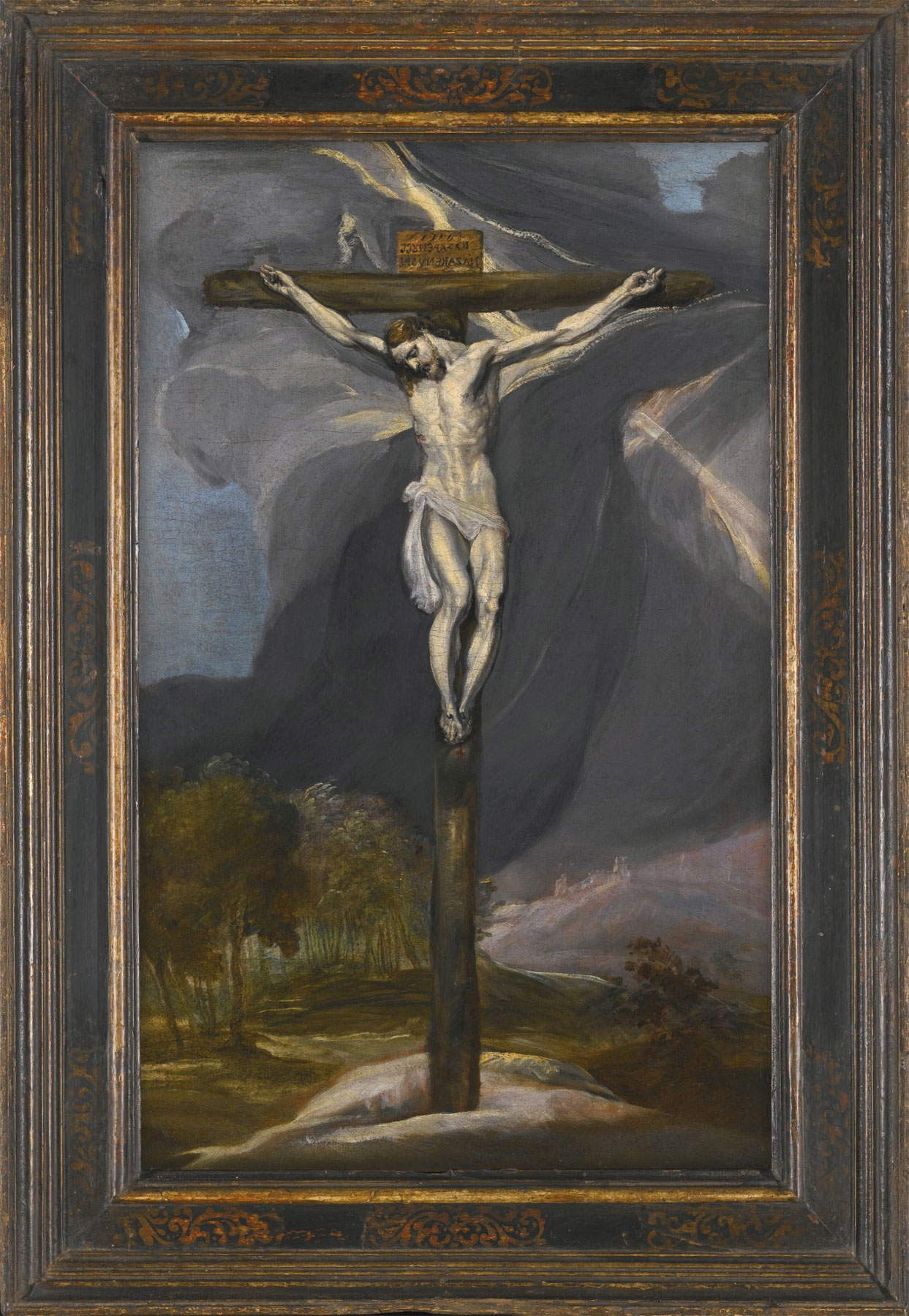A Crucifixion by El Greco (Domínikos Theotokópoulos; Herakleion, 1541 - Toledo, 1614) has been purchased by Spain’s Ministry of Culture and Sports: the state will allocate it to the El Greco Museum in Toledo, the city where the great painter active between the sixteenth and seventeenth centuries died. It is a work dated between 1575 and 1577, bought on the market for 1.5 million euros through the exercise of the right of first refusal (in Spain, too, the state can exercise this right when a work of significant cultural interest ends up on the market): the purchase was considered by the Spanish state to be an important opportunity to enrich public collections with a work that was judged to be of very high quality and by an author as prominent in art history as El Greco.
The artist, between 1571 and 1577, worked on several paintings on the theme of the crucifixion, all having as a central element a Christ on the Cross based on a drawing by Michelangelo Buonarroti. The new acquisition (this is the first painting by El Greco to enter the Toledo Museum since 1910) is probably the last (as well as the largest) of these variants, which can be dated between the last years of the painter’s Roman sojourn and Greco’s early days in Toledo. “This addition,” comments the Ministry of Culture, “will complete the collection of the Museo del Greco with a work that will explain, in a clear and didactic way, the transformation of the artist’s way of painting in its different phases, from his native Crete, via Italy, to Toledo. In addition, the good state of preservation of the canvas will allow its immediate display and inclusion in the museum itinerary.”
The Crucifixion was made for a private client, and is registered in 1909 in the collection of José Suárez (Madrid). In the 1930s, however, it is in the collection of Basque entrepreneur Félix Fernández-Valdés, owner of a wood, palm oil, and cocoa import business in Spanish Guinea. The work entered his collection with the bequest of his uncle, also a collector, Tomás Urquijo. It remained in the collection of Fernández-Valdés’ heirs until 2014, when the work was purchased by Christian Levett, a British collector living in Spain. The painting, for some years already, had been granted the bond of notable cultural interest, which gives the state the right to exercise the right of first refusal when a work is put on the market by its owners. And this is exactly what happened at the time when Gina Levett, the last owner, had decided to sell the work, taking advantage of a Sotheby’s auction. When it came on the market, the Junta de Calificación, or the committee in charge of evaluating potential acquisitions, recommended the purchase, which was finalized in late October.
This canvas is distinguished by the Christ on the Cross, which is more set back than that of the other variants, the much larger sky that increases the sense of Jesus’ isolation, and the black cloud that almost seems to swaddle the crucified body. The drama is heightened by the fact that Christ’s arms are higher up than in the other versions. Roberto Longhi, the first scholar to suggest a possible reference for El Greco in Michelangelo’s drawings of the 1540s, also spoke of this Crucifixion. In 2002, Marcin Fabianski proposed instead a comparison with a small sculpture by Giambologna, datable before 1573, a Crucifixion that is preserved in several castings, one of which is in the shrine at Loreto. For the landscape, El Greco seems to have been inspired by works by Titian, in whose studio he almost certainly worked in the early 1570s.

 |
| Spain, the Ministry of Culture purchases an important Crucifixion by El Greco |
Warning: the translation into English of the original Italian article was created using automatic tools. We undertake to review all articles, but we do not guarantee the total absence of inaccuracies in the translation due to the program. You can find the original by clicking on the ITA button. If you find any mistake,please contact us.